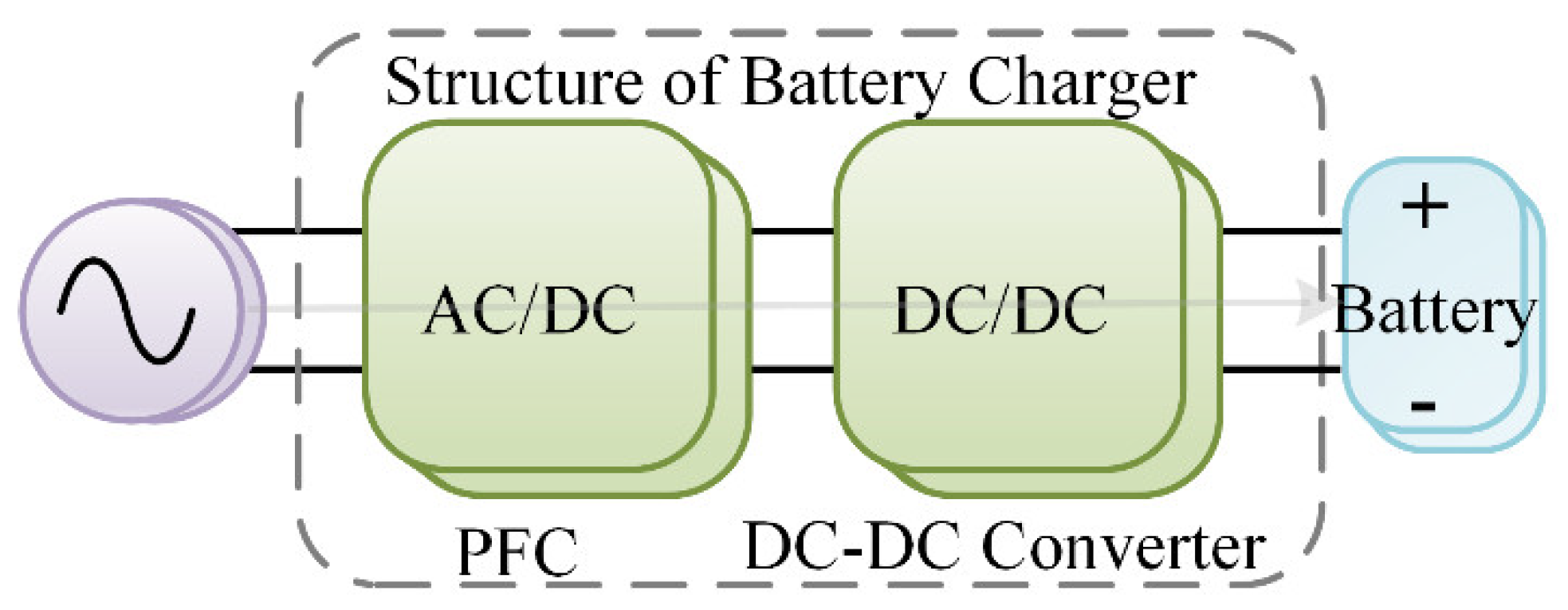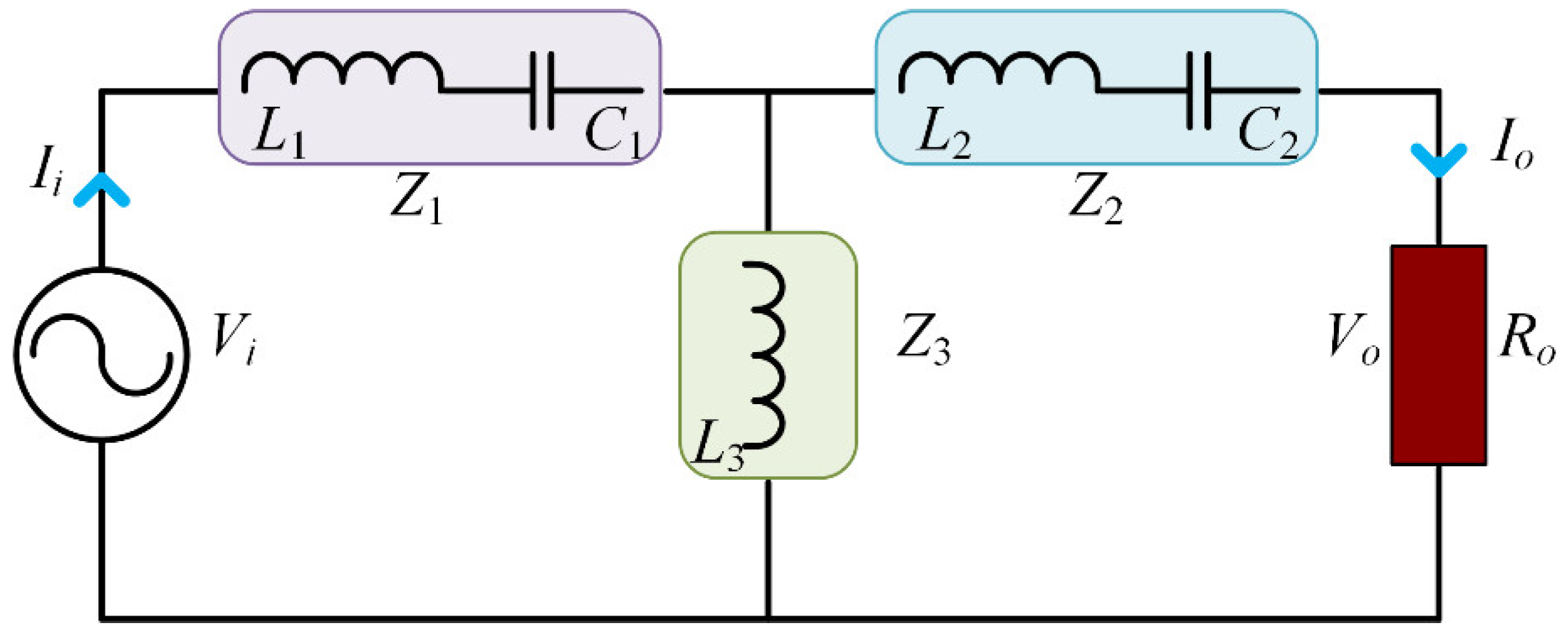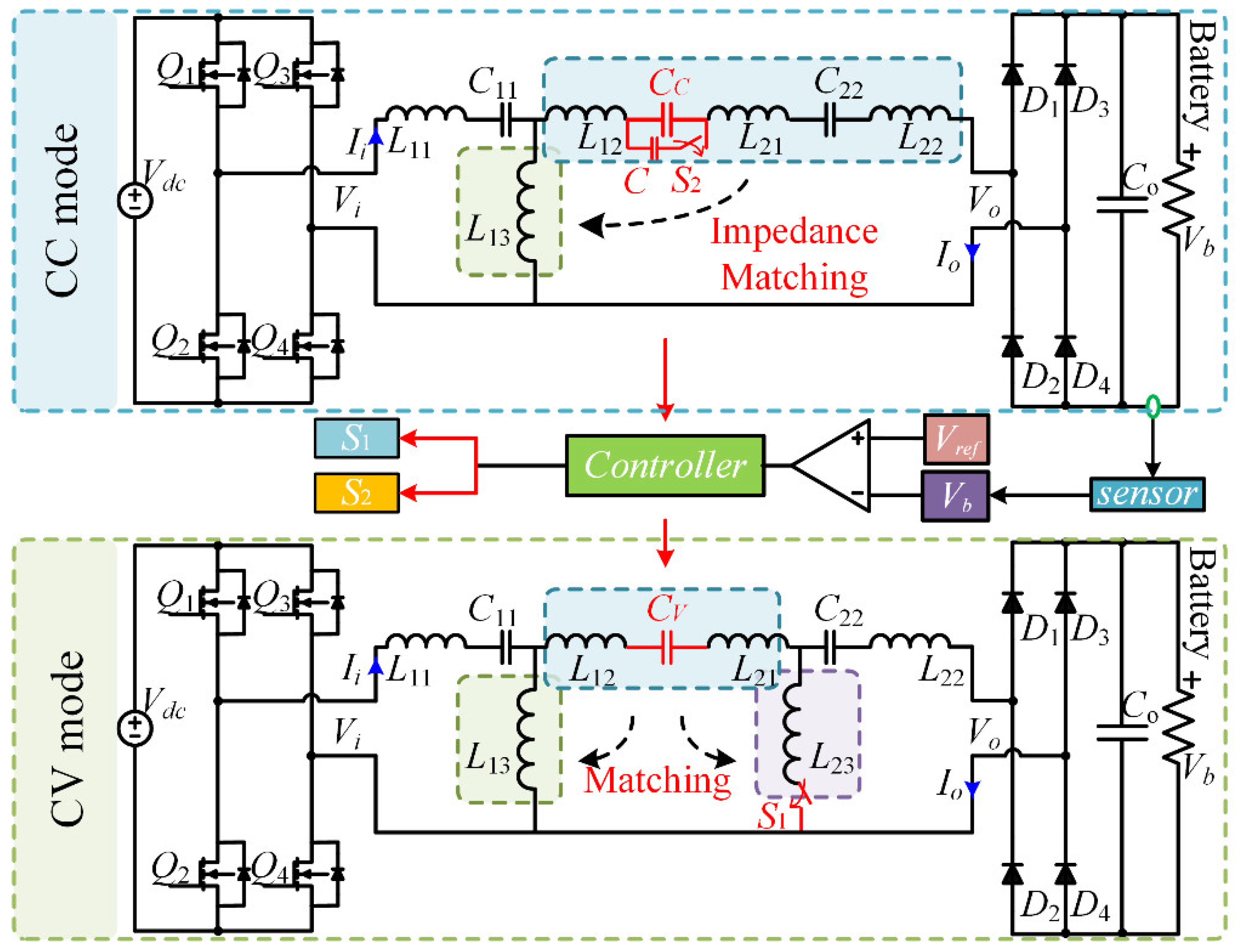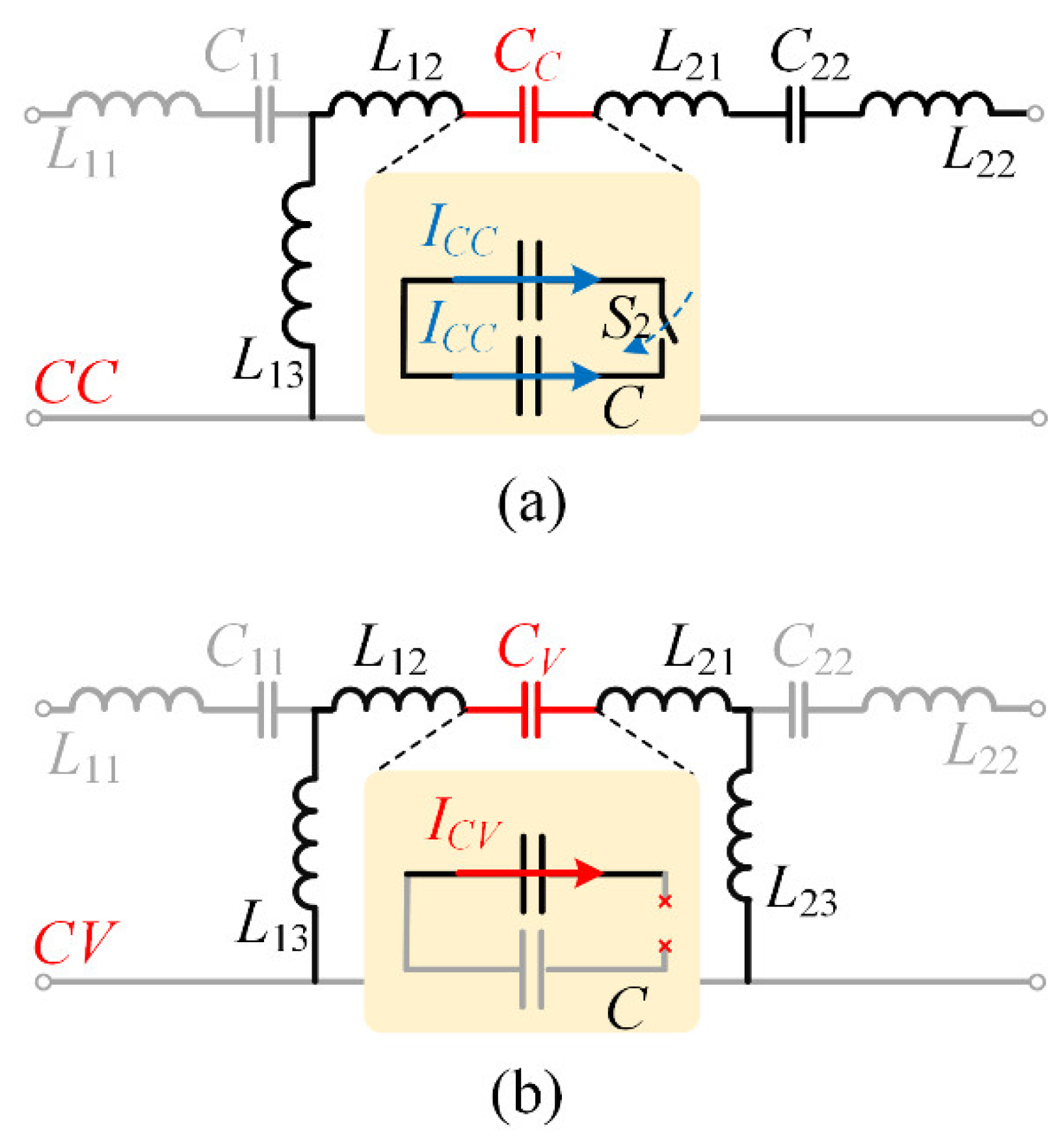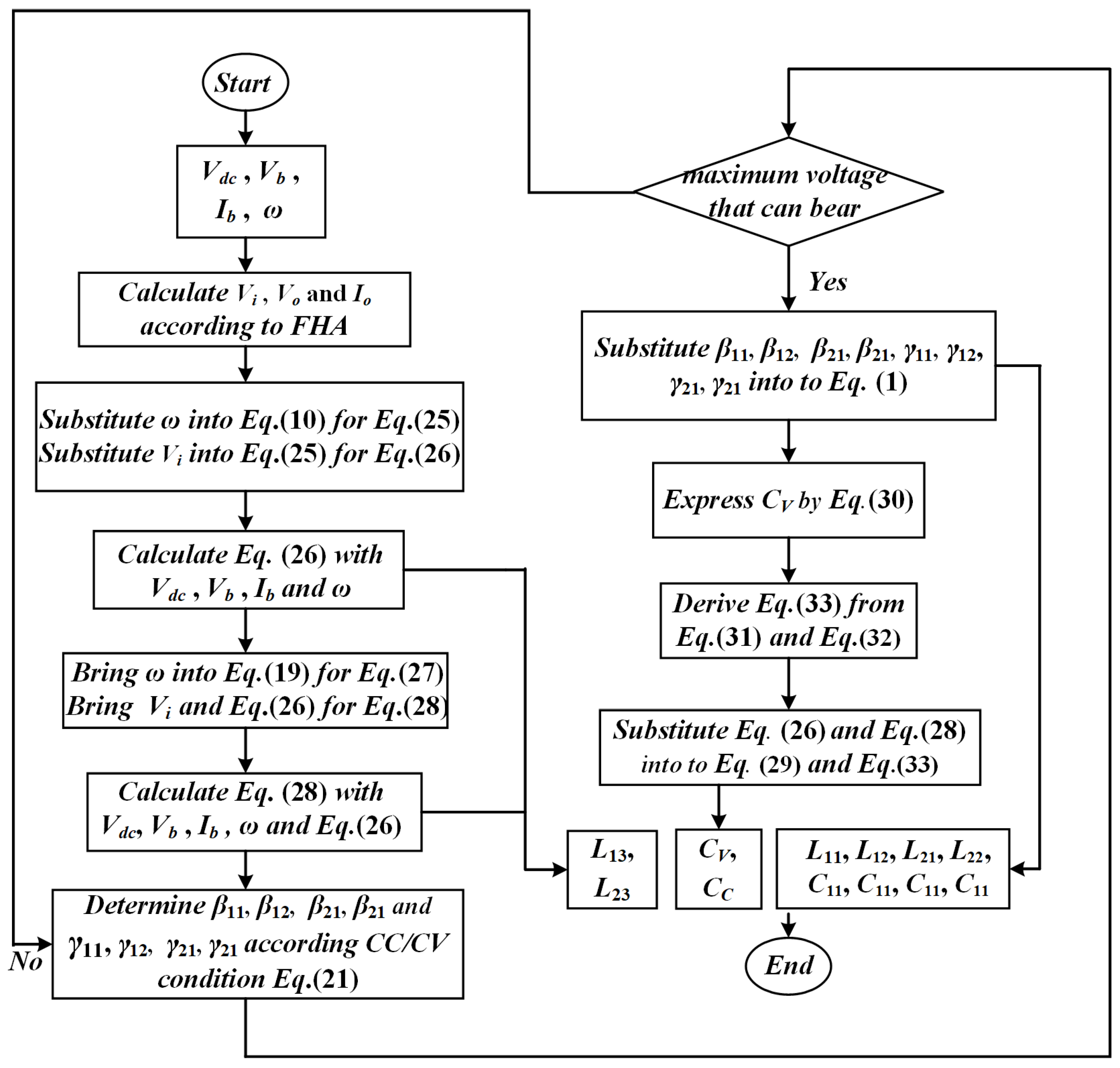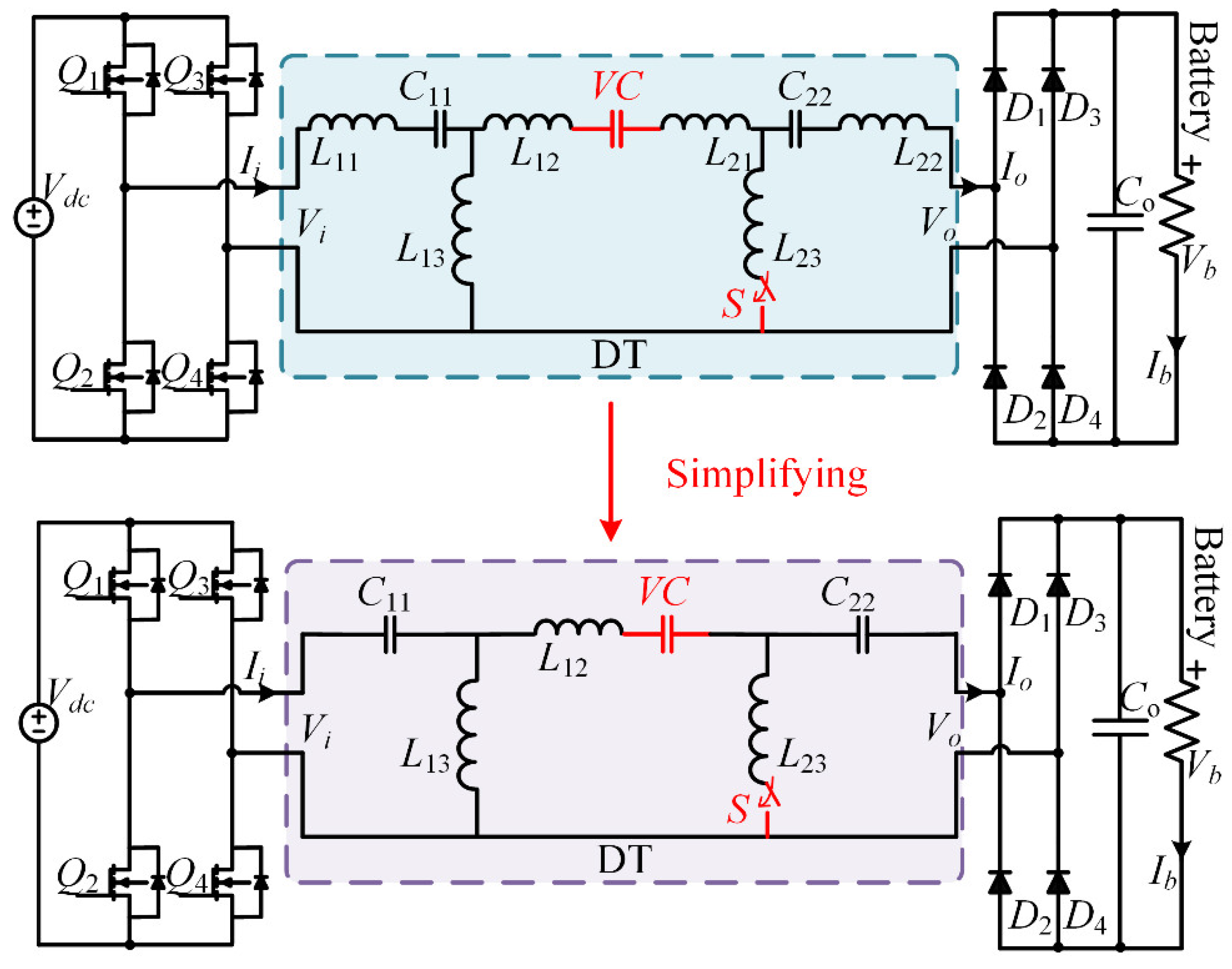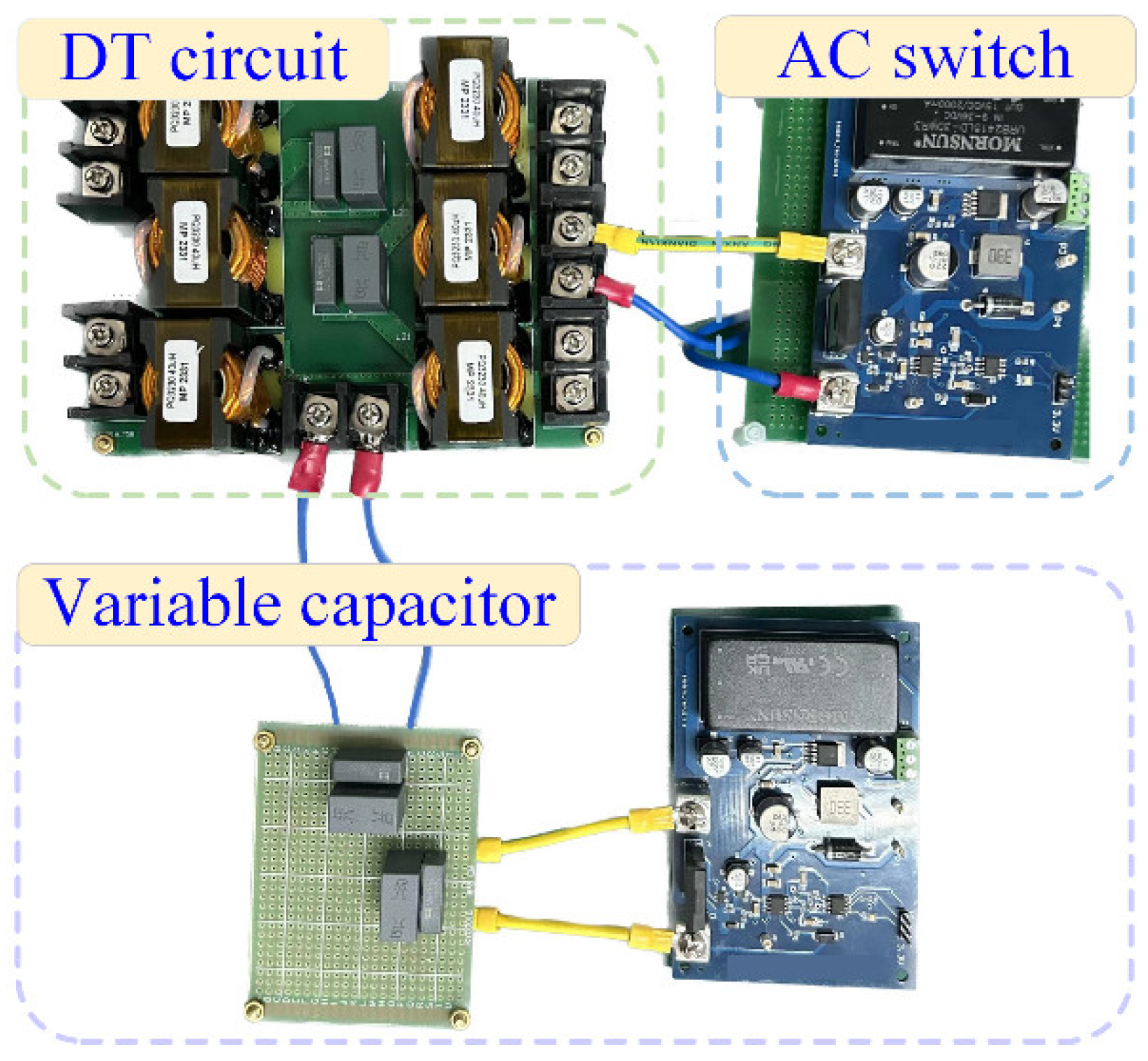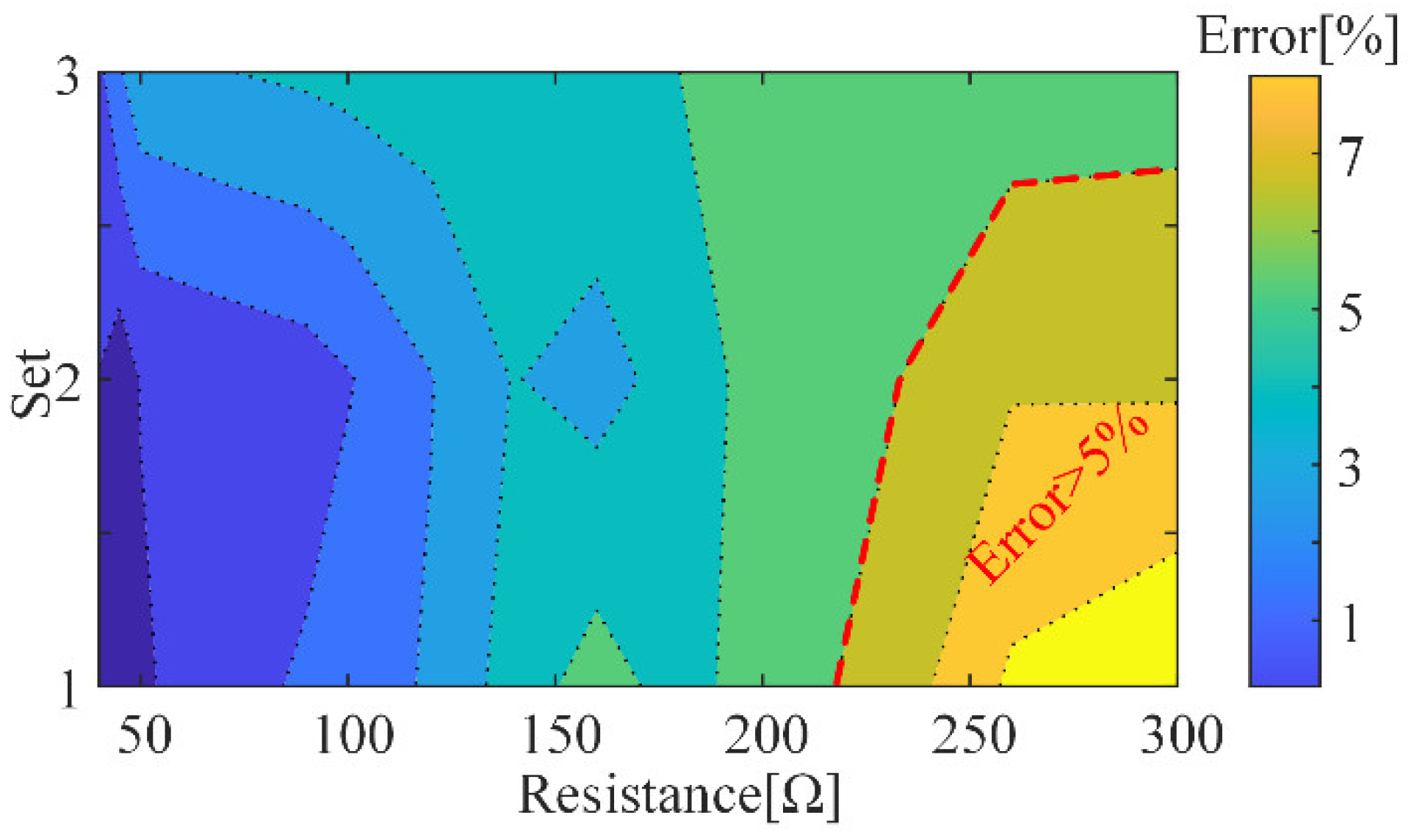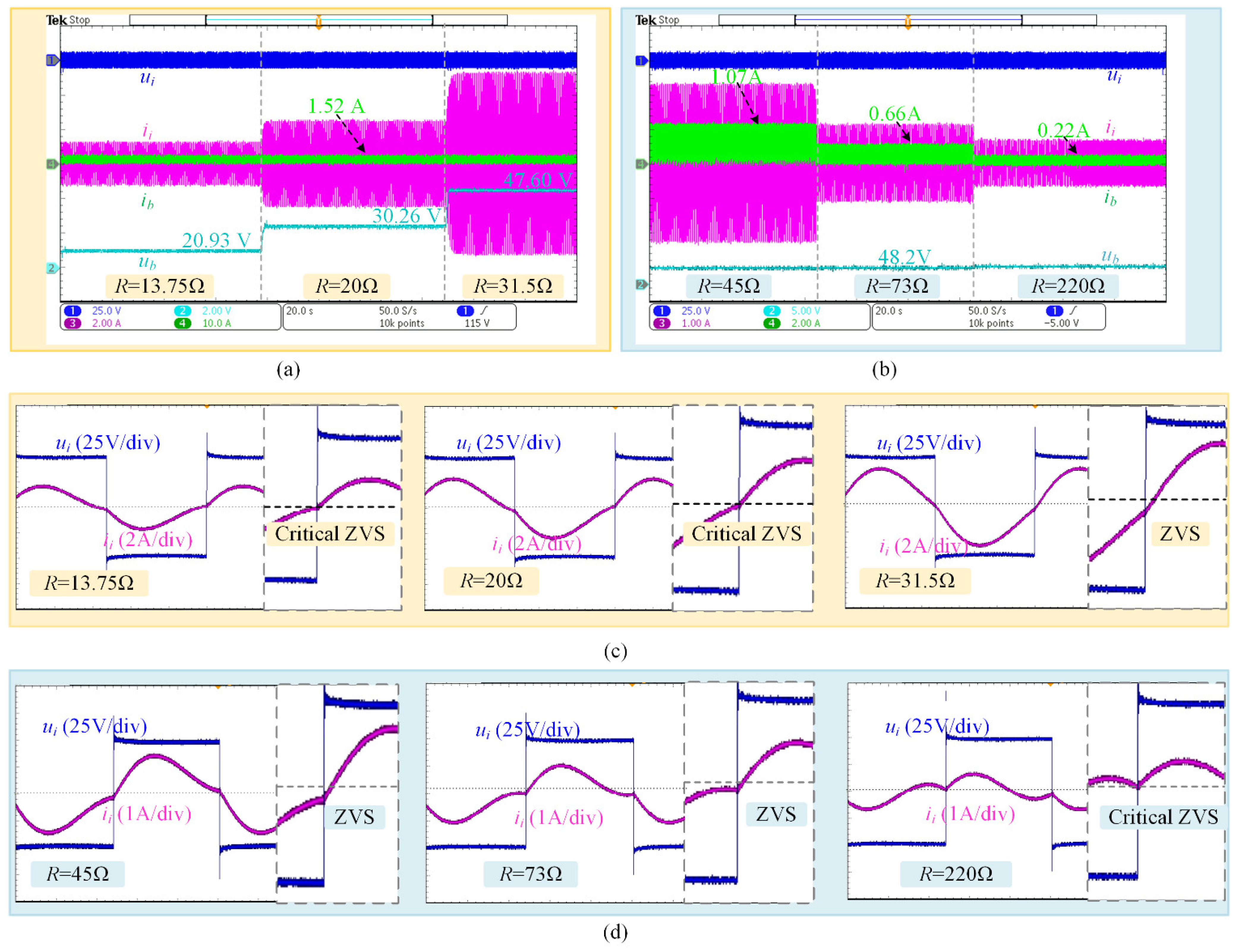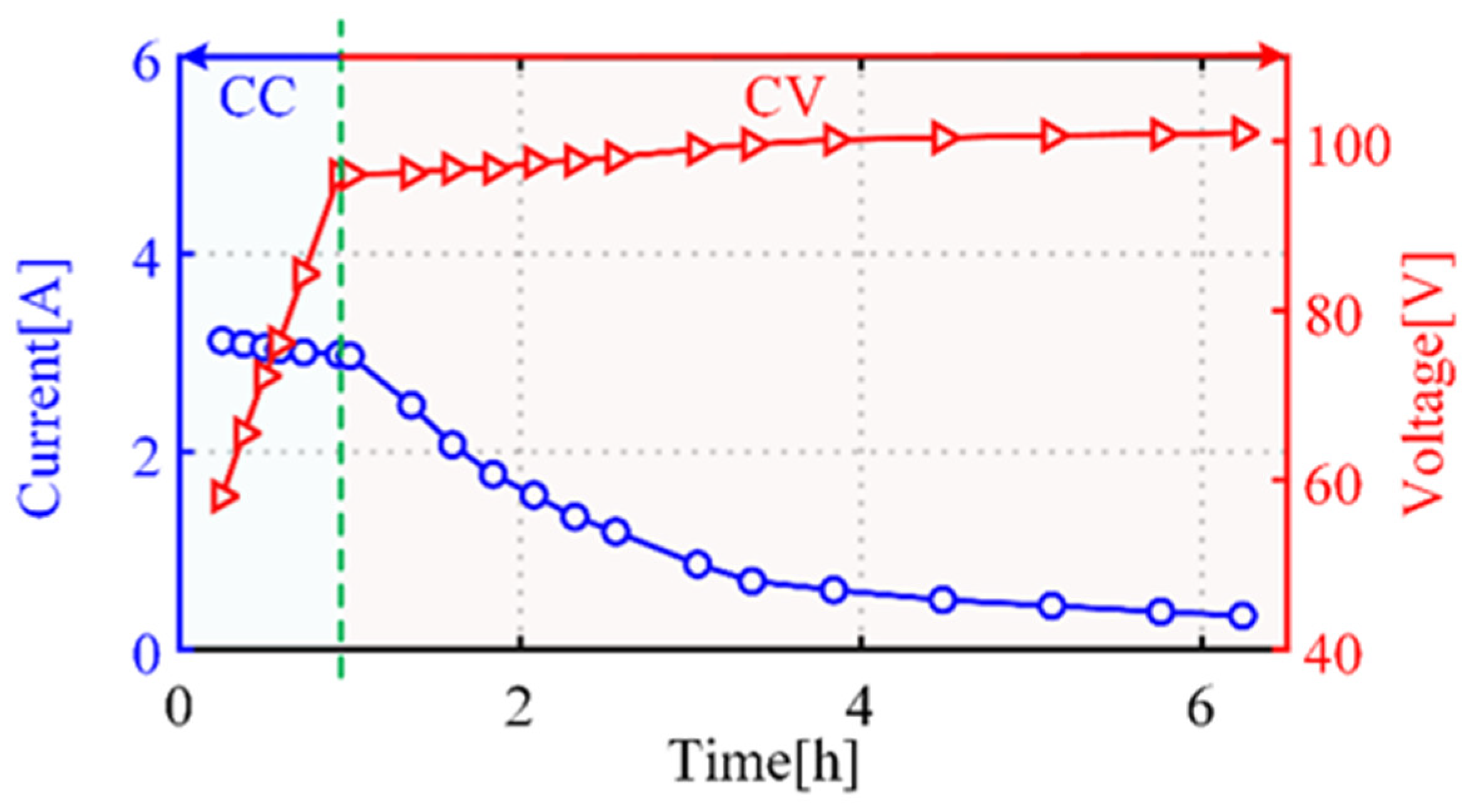1. Introduction
In recent decades, the number of vehicles with internal combustion engines (ICE) on the road around the world has seen explosive growth [
1,
2,
3]. However, the extensive use of fossil fuels and the emission of pollutant gas deteriorates numerous damages to the environment and human society. In this background, the application of electrical vehicles (EVs) and electrical bikes (EBs) has been particularly supported by many policymakers and governments for their environmental friendliness [
4,
5]. It is predicted that there will be 500 million passenger EVs and many more EBs worldwide by 2040 [
6]. As EVs and EBs rely on electric energy stored in batteries, battery chargers have become a focus of many institutions. A high-performance rechargeable lithium-ion battery is currently identified as a suitable and competitive candidate for EVs and EBs nowadays and its typical charging profile is depicted in
Figure 1. Typically, the charging process can be divided into two charging stages [
7]: first, the constant current (CC) charging stage; second, the constant voltage (CV) charging stage, meanwhile, the battery equivalent resistance is also variable during the charging process. Nevertheless, the common battery chargers can mostly charge the battery with the constant output current or voltage, which will not only shorten the battery life and compromise cycle life but also affect the safety and performance of batteries [
8,
9]. To address these issues, it is essential to design a battery charger that can respond to the battery’s characteristics by altering the CC or CV output mode and maintaining high conversion efficiency across a wide range of load resistances.
As shown in
Figure 2, the common rechargeable battery chargers are composed of two basic parts [
10]: an ac-dc converter with power factor correction (PFC) function part and a dc-dc resonant converter part widely used to modulate the output of the battery chargers. Thus, the dc-dc converter is the key to the battery chargers. Among the many topologies of the dc-dc converters, the LLC topology is a popular candidate for dc-dc converter by means of the inherent advantages, such as zero-voltage-switching (ZVS) for MOSFETs of the inverter, zero-current-switching (ZCS) for diodes of the rectifier and simple structure [
11,
12,
13]. However, for common LLC converters which usually adopt pulse frequency modulation (PFM) control, wide load variation in battery charging can result in a wide output voltage range, which requires a corresponding wide variation range of switching frequency accordingly [
14]. Nevertheless, if the switching frequency deviates from the resonant frequency, the converter will lose its zero-phase angle (ZPA) conditions and the soft switching features, resulting in increased reactive power loss and switching loss, which in turn leads to a rapid decrease in conversion efficiency. Additionally, the wide switching frequency range expands the demands on the design of transformers and gate drivers, as well as other power equipment [
15]. Designing the dc-dc converters for wide load range applications, particularly those that can implement CC-CV modes and achieve high conversion efficiency for battery charging applications, can be challenging. Various technologies have been proposed to address these difficulties, which can be divided into two categories.
The first category can be concluded as the design of modulation strategies. These strategies present various modulation control strategies that are commonly used in LLC converters to narrow the switching frequency range. In [
16], a hybrid modulation control method combined with PFM and phase shift (PS) is proposed, which can enhance the efficiency and output controllability of the LLC converters. However, hybrid modulation is not suitable for a wide output range, hybrid converters frequently rely on PFM during heavy loads, resulting in variable switching frequencies that may induce power loss and resonance deviation-related magnetizing component problems. To achieve a higher voltage gain over the same frequency range, in [
17,
18], symmetric pulse width modulation (SPWM) is adopted in the MOSFETs on the primary side, which permits the system to broaden or narrow the extra voltage range by controlling the duty cycle. However, the high demand for gate drivers and inverters significantly limits its development. Meanwhile, the extra output range is constrained by the duty cycle and the ZVS conditions.
In the second category, the methods are not limited to the optimization for modulation algorithm but focus on the design and optimization for the new topology and realization of wide load operation of dc-dc converters and CC-CV output modes. In [
19] a new topology based on LLC is proposed to obtain higher voltage gain in a narrower frequency. Although it shrinks the frequency range, the issues associated with PFM remain and the light load power is low. In [
20], a PEV charger is implemented with a wide output voltage range by means of changing the dc-link voltage through the first PFC stage, which can extremely narrow the range of frequency. However, traditional boost topology cannot meet the design requirements, and the sophisticated measurements and control strategy also limit the application. To further address the above issues and implement the CC-CV output mode, some articles are devoted to the topology transform, which transforms the structures of the dc-dc resonant converter to modulate the output mode of them. In [
21,
22], a dc-dc resonant converter with switchable full-bridge and half-bridge parts by controlling the state of AC switches is proposed. Building on this work, Refs. [
23,
24], respectively, proposed variable capacitors and variable inductors control strategies to further optimize the system and implement the switching of CC-CV modes charging process. Although both of these methods allow for a narrow frequency range, even a fixed frequency, the complexity of control and measurement significantly limits their application. Additionally, the non-resonant state of the control process reduces conversion efficiency.
In summary, although the aforementioned methods can broaden the output range and can implement CC-CV output modes with narrow or fixed frequency. However, since their resonant topologies are all based on LLC, which leads to inherent issues, such as low conversion efficiency in a wide-load range and complexity in algorithm or measurement components still exist. To address these issues, this article proposes a dc-dc converter with a DT as the resonant circuit. Furthermore, a summary of the main contributions of this article is as follows:
- (1)
The paper describes the theoretical derivation of the T-circuit, which demonstrates that the load-independent frequency can be the same as the resonant frequency through the proposed parametric configuration. This means that the T-circuit can theoretically achieve CC and CV output near the resonant frequency. By deploying AC switches and variable capacitors, the proposed DT converter can operate and switch between CC and CV modes at the resonant frequency.
- (2)
Owing to the inherent load-independent characteristics of DT, the inverter on the primary side can operate at a fixed frequency with a constant duty cycle without any additional real-time control scheme and complexity measurement devices.
- (3)
Based on experimental results, firstly, critical ZVS can be achieved in both CC and CV modes by carefully designing the DT resonant converter, which can significantly reduce switching losses. Secondly, the DT converter operates at the fixed resonant frequency regardless of CC and CV mode, which not only eliminates the issues caused by PFM but also reduces the circulating energy losses. The above two factors guarantee the high conversion efficiency of the system under various load conditions.
2. DT Characteristics Analysis
In this section, the basic characteristics of the DT are derived and demonstrated. In addition, the parametric configuration design methods for CC/CV and ZPA are discussed and it is demonstrated that with this proposed configuration scheme the DT can achieve CC/CV at a fixed resonant frequency under the input ZPA condition.
The schematic of the dc-dc converter with a DT as the resonant circuit is depicted in
Figure 3. Obviously, several LC filters, such as
L11 and
C11, are adopted in the DT to replace the commonly used several capacitors. By replacement of the capacitors with LC filters, the total harmonic distortion (THD) will decrease. Meanwhile, the low THD also improves the accuracy of fundamental harmonic analysis (FHA), especially in CC mode [
24]. In addition, the replacement is not necessary, and this paper chooses to replace LC filters for the generality of the parametric analysis. It should be noted that the above functions can be achieved in the actual design process as long as the following impedance conditions are met.
2.1. Basic Characteristics of DT Topology
Since several capacitors and inductors are adopted in the DT, for the sake of simplification, in this article, a parameter design method is proposed and used to represent the value of the components by using the relationship between the parallel inductor
L13 or
L23 and the series capacitors or inductors.
β and
γ, respectively, represent the impedance ratio of inductance, capacitance, and parallel inductance. The basic characteristics of the DT using this method can be defined as follows:
where the first number represents the parameter belonging to which T-circuit and the second number represents the position in that T-circuit. And
Z is the impedance of each part accordingly.
2.2. Output Characteristic Analysis of T-Circuit Topology
It is obvious that the DT is cascaded by two T-circuits. Therefore, systematically analyzing the output characteristic of the T-circuit is vitally important and necessary to figure out that of the DT. The equivalent circuit of the T-circuit using FHA is depicted in
Figure 4.
Vi is the fundamental voltage component of the square wave generated by the full-bridge inverter.
Ii is the input current of the T-circuit.
Vo and
Io are the output current and voltage of the T-circuit.
Ro is the load resistance of the T-circuit.
The noted reciprocity of the T-circuit means that a T-circuit can be designed as a voltage source or a current source by changing the parameters of the circuit. Accordingly, the voltage and current characteristics of the T-circuit are derived in the following part. To simplify the theoretical analysis process, the following part adopts the method proposed in (1), but only one T-circuit is analyzed, so the subscript has also only one number label. For example, .
According to Kirchhoff’s voltage law (KVL), describing T-circuit as following equations:
Further, the output voltage and current can be deduced as equations of the input voltage and current:
The input current also can be deduced as:
Consequently, the input impedance of the T-circuit can be derived as:
Then, the voltage gain of T-circuit
GVV and the current gain of T-circuit
GII can be expressed by
Likewise, the transfer impedance of T-circuit
GIV and transfer admittance
GVI of the T-circuit can be described by
where the first letter represents the input side, and the second letter represents the output side. For example, the current gain of T-circuit
GII is the magnitude of the ratio of output current
Io and input current
Ii.
2.2.1. Constant Output Current Mode Analysis
This subsection introduces the condition of the T-circuit for achieving the CC output mode, namely, configuration
Z1,
Z2, or
Z3 to make the output current of the T-circuit independent of the load. According to
GVI and
GIV, the CC output mode can be derived as:
The parameters are expressed as:
Then, substituting (8) into
GVI, the new transfer admittance can be calculated as:
As for the current driven T-circuit, according to GII, it is clear that the Ro located in the denominator of GII has no coefficient, thus, the T-circuit cannot achieve the CC output mode under this condition.
In conclusion, a T-circuit driven by a voltage source can achieve the CC mode when
. Meanwhile, according to (5), the ZPA condition of the T-circuit can be calculated as:
Therefore, a T-circuit can implement the CC output mode in case of input ZPA conditions, when the parameters are configurated as:
2.2.2. Constant Output Voltage Mode Analysis
This subsection discusses the condition of the T-circuit for realizing the CV output mode.
From
GVV, when driven by a voltage source, the T-circuit can achieve the CV output mode by satisfying the following equation:
Three available parameter configuration options can be solved:
However, ZPA cannot be achieved under either of the above three conditions according to (11). Similarly, after solving
GIV, the CV output mode can be achieved by
The parameters are expressed as:
Further, the new transfer impedance can be defined as:
As a result, a T-circuit driven by a current source can achieve the CV output model and maintain input ZPA under
, but a T-circuit driven by a voltage source cannot. However, normal systems are driven by a voltage source, meanwhile, a lot of control schemes are proposed to commonly control the input voltage, which constrains the practical and applicable abilities of a T-circuit driven by a current source to achieve the CV output mode. Fortunately, according to
GVI and
GIV by cascading two T-circuits, a new voltage gain
GVIIV can be defined as:
where
Z13 is
Z3 of the first T-circuit,
Z23 is
Z3 of the second T-circuit. Then substituting the load-independent conditions (15) of the two T-circuits, the voltage gain of DT
GVIIV can be calculated as:
Meanwhile, the parameters can be designed as:
In summary, two T-circuits driven by a voltage source can achieve CV output mode and ZPA simultaneously, when the parameters are set to
By comparing the conditions of realizing CC mode and ZPA conditions (12), it can be found that under the above conditions (21), either of the two cascaded T-circuits can also achieve CC mode and ZPA conditions.
3. Implementation of DT with CC and CV Output Modes
This section demonstrates the topology-switching strategy of the DT and the parameter design method. Based on the results of the above analysis in
Section 2, through designing the parameters
β and
γ, the T-circuit can achieve CC and CV modes under ZPA conditions at the resonant frequency. However, a single T-circuit cannot switch from CC/CV mode without changing the driver source, which is impossible for normal charging systems. To address the CC/CV switching issue, a DT with ACs and a variable capacitor (
VC) is designed. The ACs consist of two MOSFETs connected in anti-series and the variable capacitor is comprised of a capacitor in parallel with a switching capacitor, which is a MOSFET
S2 connected with a capacitor in series. As shown in
Figure 5, the proposed DT can implement the CC/CV mode switching by controlling the on/off of the ACs
S and the capacitance of the variable capacitor
VC.
3.1. Switching Strategy of the dc-dc Converter
According to
Figure 5, when the DT operates in CC output mode, it is necessary to disconnect the parallel inductor
L23 of the second T-circuit from the DT. Thus, during the CC output mode, the ACs
S1 will be controlled under off conditions. Simultaneously, upon disconnecting the
L23 from the DT, the inductor
L21,
L22, and capacitor
C22 in series in the second T-circuit will be connected to the output branch of the first T-circuit. Meanwhile, the capacitance of variable capacitor
C will also be increased it capacitance value by turning on the
S2 to maintain the impedance of the output branch matching the parallel branch, which determines the achievement of the ZPA and CC output mode. While operating under the CV output mode in
Figure 5, the ACs
S1 should be turned on to connect inductor
L23. At this moment, the DT is cascaded with two T-circuits. The variable capacitor should, respectively, decrease the capacitance by turning off the
S2 to match the impedance of the two parallel branches of the DT to keep the ZPA and CV output conditions.
Refer to
Figure 5 for the switching strategy diagram. When the battery voltage increases to its maximum voltage in CC mode with the increase in the battery resistance, the amplifier will send a signal to the controller. The controller will execute corresponding operations on the ACs
S1 and change the capacitance of variable capacitor
VC by
S2 to switch DT from CC to CV output mode.
Figure 6 also displays the operating modes of the variable capacitor and
S2.
3.2. Parameters Design for DT Charger
The parameters of DT can be derived by the following design method. Typically, as for a battery charger, the dc link voltage
Vdc, battery current (current of CC mode)
Ib, battery voltage (voltage of CV mode)
Vb, switching angle frequency ω same as the resonant frequency in the proposed DT converter, and the parameters are marked in
Figure 5.
The full-bridge inverter generates the input square voltage of the DT, and the system operates at a fixed frequency and under a fixed duty cycle of 50% of the MOSFETs of the inverters. According to FHA in [
25], the relationship between the dc link voltage of inverter
Vdc and the voltage of the fundamental wave of input square wave
Vi can be expressed as:
Then the ac output of DT resonant circuit
Io and
Vo can be represented by the battery
Ib current and voltage
Vb of the DT, according to FHA [
24]:
Then, the resistance of the batteries
Rb can also be defined as:
The relationship between the voltage of the fundamental wave of input square wave
Vi and the ac output current of the DT circuit in CC output mode can be derived as:
Further, by substituting (22) and (23) to (25), the inductor
L13 can be calculated as:
Similarly, during CV output mode, the relationship between the voltage of the fundamental wave of input square wave
Vi and the ac output voltage of the DT circuit
Vo can be derived as:
Then the inductance
L23 of the second parallel inductor can be derived by substituting (22) and (23) to (27):
The remaining parameters of the DT can be designed according to (1) and (21). Additionally, although the parameters above can be designed arbitrarily as long as the equations and are satisfied simultaneously, the maximum voltage that the actual device can bear should also be considered.
Obviously, to compensate for the impedance change caused by the topology switching in
Figure 5 and to ensure that ZPA can be implemented under both CC and CV output modes, the VC is supposed to alter from one defined capacitance to another capacitance without continuous change of capacitance. Thus, for the sake of simplification, in this article, a scheme similar to a capacitor array is applied to realize capacitance hopping. The structure diagram of VC is depicted in
Figure 6a in CC mode, and
Figure 6b in CV mode, besides, the design method is discussed as follows:
During the CV output mode, the capacitance of
VC CV can be designed as
C12 and
C21 in series in
Figure 3 according to (1) and (21), and the capacitance is calculated as:
furthermore, by substituting (26) and (29) into (30),
CV can be derived as:
While operating under the CC mode in
Figure 6a, the capacitance of
CC VC can be expressed by
meanwhile, adapting the parameter design method,
CC can be defined as:
Similarly, according to (1) and (32),
α can be calculated by
Then, substituting (26) and (29) into (33),
CC can be expressed by
Finally, the capacitance of
C can be expressed by
. The parameter design process is shown in
Figure 7.
According to (21), all
β parameters can be zero, which means the corresponding inductors can be removed from the DT converter. Nevertheless, by analyzing (34), the
β12 and
β21 cannot equal zero simultaneously in order to keep the
CC bigger than zero. Therefore, the DT converter can be simplified as shown in
Figure 8. These two design options are equivalent when analyzed with FHA and can be chosen based on varying application scenarios and requirements. The simplified DT circuit can be selected to meet specifications such as power density, volume, and weight. Conversely, the circuit topology that preserves inductance can be chosen for conditions that require sensitivity to high-frequency components within the resonant tank.
5. Conclusions
In this article, a DT with ACs and a variable capacitor are applied to the dc-dc converter for EV and EB battery chargers. The proposed DT converter can implement the switching of CC/CV to CV or CC output mode by altering the states of ACs and changing the capacitance of the variable capacitor without changing the switching frequency, which means the DT converter can operate at the resonant frequency, to significantly decrease the circulating energy and conductance loss, meanwhile, the dependence on PFC is also reduced compared with that LLC converters. Besides, the proposed DT or simplified DT (sDT) is adapted to accommodate various application scenarios. For instance, the simplified DT, with fewer inductors, is better suited for lightweight and high-power-density mobile platforms. The normal DT with the equivalent resonant state by FHA to sDT, depending on the filter inductors, can significantly enhance the filtering effect and boost output accuracy, thereby mitigating the impact of high-frequency components on the system. Furthermore, the primary switches can mostly achieve ZVS during the CC output mode and realize ZVS or critical ZVS in the whole CV output mode. Meanwhile, in the theoretical derivation of the DT, the conditions for achieving CC and CV output and system ZPA are derived, besides, a design method for parameters of the DT according to the charging current and voltage of batteries are also brought. Finally, to verify the theoretical analysis, a laboratory-scale prototype with the DT for battery charging is built. The load-independent ability and control accuracy of the DT are verified by the experiment. Additionally, the performance of the prototype on both electronic loads and a 96 V/3 A battery pack is displayed and analyzed. The experimental results demonstrate that the DT converter can operate under CC and CV output modes with less than 4.18% and 4.44% relative error, respectively, and during the whole charging process, the dc-dc conversion efficiency is higher than 89.7%, further, the maximum efficiency is measured as 96.7% in CC output mode.
The contribution of this paper can be summarized as follows. The DT resonant converter avoids the issues caused by PFM modulation and reduces the circulating current energy losses by means of the fixed frequency modulation at the resonant frequency. In addition, the gain of the output voltage is broadened by parametric design with a load-independent approach. Finally, the CC-CV charging can be realized by topology reconfiguration.

